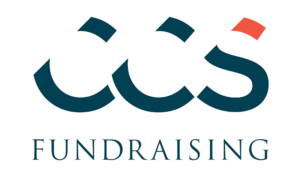So often, organizations face pipeline challenges because of difficulty re-engaging lapsed donors or difficulty gaining access to new prospects. Relationship mapping can help resolve these challenges by matching your organization’s prospects with the personal and professional networks of your organization’s board leadership. As a result, your board can become instrumental in facilitating introductions, cultivating prospects, and, ultimately, moving prospects towards the ask.
Relationship Mapping in 6 Steps
The “Six Degrees of Kevin Bacon” game was invented as a play on the concept of six degrees of separation—the idea that any two people can be connected in a maximum of six steps. Fun and addictive, the game demonstrates just how small the world of Hollywood really is by drawing connections between Kevin Bacon and any other actor. In fundraising, the world of qualified prospects and your organization’s connections to them is even smaller.
To achieve success with relationship mapping, follow these simple, yet strategic, steps:
- Research your prospects
- Engage a task force/ad-hoc committee
- Map your relationships
- Select viable connections
- Make connections
- Build relationships
Step 1: Research Your Prospects
To ensure your list of prospects is well-qualified, it’s important to do your research. Gather information on both new prospects and lapsed donors, including giving capacity, giving history to your organization (if any), and area of interest/alignment. Completing this research in advance will ensure that the prospects you map are qualified and will increase the likelihood of a successful introduction.
Step 2: Engage a Task Force
Recruit a handful of well-connected board members to assist you with your prospect pipeline project by serving as a member of an ad hoc committee or task force. Five to seven members will keep the group manageable. An ideal task force member is one who is connected in multiple sectors (casting the widest net of connections), serves in an executive role (providing access to the most influential people), and is not overcommitted (ensuring they have the time and interest to help). Select a member to chair the task force – someone who will lead by example and serve as an encouraging and motivational peer. As with all initiatives, be sure to inform your committee of the scope of assistance needed for the project upfront. Schedule monthly calls with the committee to check in on progress and provide updates.
Step 3: Map Your Relationships
Relationship mapping, or, identifying likely connections between two people, takes the guess work out of list vetting. Instead of asking board members, “Do you know anyone on this list?” mapping relationships allows you to say, “We think you know this prospect. Can you confirm?” Tools like Muckety and Relationship Science are invaluable for identifying not just who your board members may know on your prospect list, but specifically how they know them.
Step 4: Select Viable Connections
After mapping all possible connections between your committee and your prospects, review the individualized list of potential connections with each committee member and identify, first, connections that are viable, and, second, prospects that the committee member is willing to engage to make an introduction. A viable connection is one in which the committee member confirms they do, in fact, know the prospect. Since you have already done the research to qualify the prospect as having both affinity for your cause and capacity to give (Step 1), there is a strong likelihood the prospect will be open to an introduction, particularly from a familiar face.
Step 5: Make Introductions
Provide each committee member with a call strategy sheet for each prospect they agree to connect with. Conduct a briefing call with each committee member to reiterate that the purpose of their outreach to the prospect is to simply facilitate an introduction to your organization’s internal leadership, not to pitch a project or campaign. Provide each committee member with a timeframe to complete the calls and ask them to take notes on their calls so that they can report back to the committee during the next scheduled group call.
Step 6: Build Relationships
Once the introductions to your internal leadership have been made, follow up with your prospects promptly to schedule your first introductory meeting so you can begin the cultivation process.
Follow these simple, yet strategic steps and your organization is sure to reap the benefits of engaged board members, a qualified prospect pipeline, and the new gifts that will follow from a successful game of “Six Degrees of Cultivation.”
More Insights
How to Build Trust in Your College or University to Maintain Fundraising
In the face of declining public trust, your college or university can ensure fundraising momentum with these strategies.
Your Fundraising Forecast Template for 2024
Projecting fundraising revenue can always feel daunting, especially during economic and political uncertainty. CCS Fundraising is here to help you plan for 2024 and beyond with tactical guidance and a downloadable fundraising revenue forecast template.
